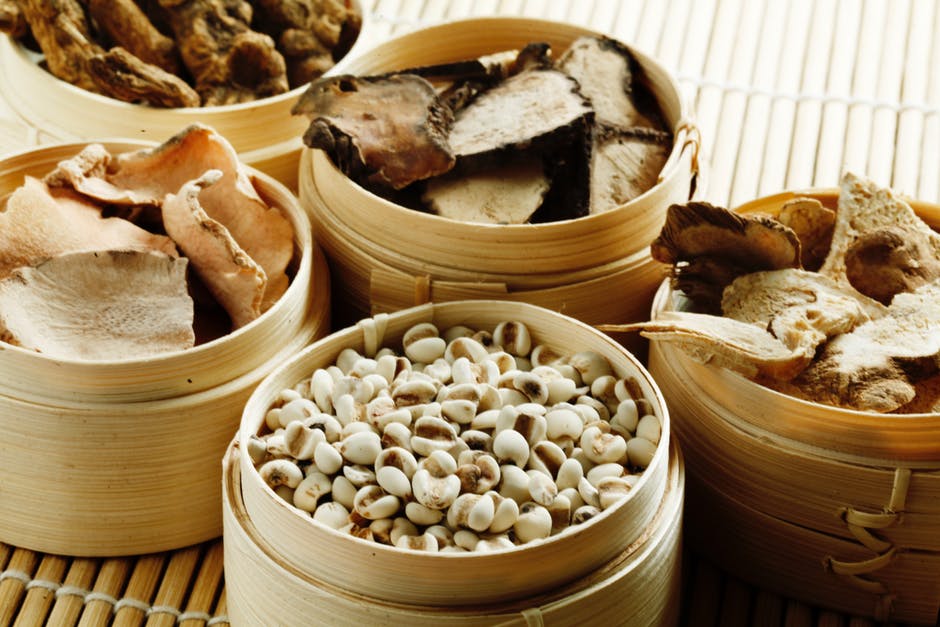
The History Of Traditional Chinese Medicine For Dogs
Share
 With the increasing realization of the therapeutic benefits of natural treatment approaches, more and more people nowadays sought natural treatment alternatives for their pets as well. An increasing number of veterinary clinics around the world are accepting Traditional Chinese Medicine as an effective treatment option for animals.
With the increasing realization of the therapeutic benefits of natural treatment approaches, more and more people nowadays sought natural treatment alternatives for their pets as well. An increasing number of veterinary clinics around the world are accepting Traditional Chinese Medicine as an effective treatment option for animals.
Traditional Chinese Medicine (TCM) has been used for over 3,500 years to cure various diseases. However, the first documented proof of TCM for animals dates back to a period between 659 BCE and 621 BCE. The Chinese initially used it to heal their horses and later other farm animals before cats and dogs.
The western medicinal practices slightly influence the Traditional Chinese Medicine we know today. However, the Chinese based this style of medicine on the centuries-old practices that prevailed in the region. It has long been considered the standard form of medicine in the Greater China. While in the other parts of the world it is used as an alternative medicinal approach.
Chinese ancestors built TCM around the idea of maintaining ‘balance’. They believed that maintaining balance in one’s diet, with others, with nature and within oneself is essential for the well being of a person. There are four fundamental components of TCM – Chinese Food Therapy, Acupuncture, Herbal Therapy, and Tui Na.

Here's A Brief History Of Traditional Chinese Medicine
The origins of Traditional Chinese Medicine are lost in prehistory, probably before writing was even invented. The earliest records of written language in China dates back to 1766 BC during the reign of the Shang dynasty. The writings on medicine from that time enlighten us about TCM's history dating back to 2,000 years.
The Shang however, did not have a concept of medicine much distinct from other fields. Oracular inscriptions were found on bones and tortoise shells that refer to the illnesses that affected the royal members of the Shang family. Some of them included eye disorders, toothaches and even bloated abdomens. The Shang described these diseases as curses that were supposedly sent by their ancestors. That said, no evidence proves that the Shang used herbs in their remedies.
In an overview in 2006 however, there were only a dozen drugs described in 1,100 BCE. This number increased to 1,900 by the end of the 16th century. Chinese Materia Medica (CMM) records consisted of as much as 12,800 drugs.
Joseph Needham speculates that the therapeutic approach of acupuncture might have prevailed during the Shang Dynasty. The basis of his speculation remains the stone and bones that were found in ancient tombs.
The oldest work discovered so far on the Chinese medical theory is ‘The Yellow Emperor’s Inner Canon’. It is a compilation from the first century BCE that consists of shorter texts corresponding to different medical lineages. The text is written in the form of a conversation between the legendary Yellow Emperor and the ministers of his kingdom. Explanations of relations between humans and their environment, the cosmos, and their own body can be found in the text. It even defines relations between the symptoms of a person’s illness and their diagnosis.
The data in the Yellow Emperor’s Inner Canon is contradicting to the one found in ‘Recipes for Fifty-Two ailments’. The latter was excavated in 1970 from a tomb that was reportedly sealed in 168 BCE. The Inner Canon concluded that there was no influence of spirits and the use of magic in a person’s illness. In fact, the Inner Canon led to a more mature understanding of concepts like Yin and Yang along with the Five Phases.
Another piece of work that throws some light on the Traditional Chinese Medicine TCM is the ‘Treatise on Cold Damage Disorders and Miscellaneous Illnesses’. The work dates back to a period between 196 and 220 CE towards the end of Han Dynasty. This work by Zhang Zhongjing focuses on drug prescriptions and is the first medical work that combined the concepts of Five Phases and Yinyang with drug therapy. The symptoms were carefully grouped into clinically useful patterns that could immensely benefit as the targets for treatment.
Several other works from the following centuries were found that tried to summarize the contents of the Inner Canon. One such work is 'The Canon of Problems' probably from second century CE. The Canon of Problems settled the different theories in the Yellow Emperor’s compilation and was able to develop a complete medical system centered around needling therapy. A consistent body of doctrines concerning acupuncture was assembled in the ‘AB Canon of Acupuncture and Moxibustion’.
It was the early 1950s when the Chinese Government showed a renewed interest in TCM. The doctrines found in the Yellow Emperor’s Inner Canon and the Treatise on Cold Damage were standardized in China. Attempts were also made to integrate them with modern notions of anatomy and pathology. In 1950, the Chinese Government promoted a systematized form of Traditional Chinese Medicine.

Traditional Chinese Medicine For Dogs
When people realized the benefits of Traditional Chinese Medicine, they soon wanted the same for their cats and dogs. TCM can be used in the treatment of skin diseases, lung diseases, kidney problems and many other problems relating to your dog’s health. Since the medicines are purely natural, they pose no threat of side effects to your beloved pet. The herbal medicines can also be given in conjunction with the conventional western medications. However, it is strongly recommended that you discuss it with your vet.
The Traditional Chinese Medicines for dogs come in a variety of forms including dried herbs, powdered dry granules and sometimes even as herbal teas. Powdered medicines are easier to administer and can be mixed with wet food for your dog. Sometimes the taste of these medicines can be especially bitter. At times like these, you can mix the powdered medicine in the food that your dog prefers or may also try different recipes.
However, the Traditional Chinese Medicines might work slower on your dog’s illness. Since they are completely natural, they tend to be gentle on the dog’s body. They may take up to two weeks or more to show significant results depending upon the severity of the disease.
Fundamental Concepts of Traditional Chinese Medicine for Dogs and other animals
Food Therapy
According to TCM, each food has energetic properties like warming, cooling, or consists of flavors that act on the body in a specific way. Therefore, through Food Therapy, the TCM vets combine foods based on their inherent energetic properties. They recommend food combinations that are essential for maintaining optimal health of the dog.
Acupuncture
Acupuncture is probably the most popular concept of Traditional Chinese Medicine. In acupuncture, the vets use filiform needles for the treatment. They place the needles at predetermined points of the dog’s body with a goal to move ‘Qi’. They define Qi as the force that makes us alive.
Herbal Therapy
The vets prescribe therapeutic medicines that they obtain from naturally occurring substances such as plants and herbs. These herbal medicines then help in maintaining the balance between Yin and Yang of the body.
Tui Na
Tui Na is to Traditional Chinese Medicine what Chiropractic is to Western Medicine. It consists of medical manipulation using hands which eventually enhance the movement of Qi in the body.
For dogs, acupuncture and herbs work very well when combined together. Acupuncture therapy renders immediate benefits, while the herbs ensure that the effects are long term.
